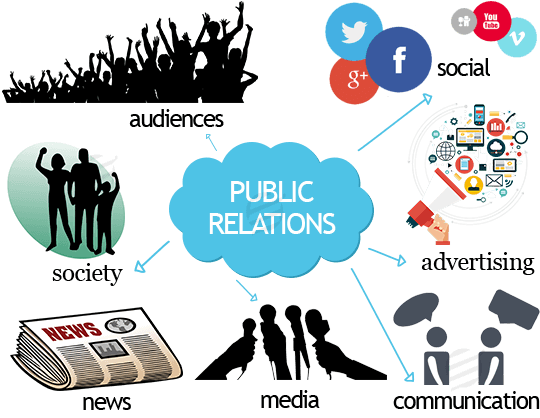course content

A Training Diploma in Public Relations and Media Management is a program that offers specialized training in the field of public relations (PR) and media management. This diploma is designed to provide students with the knowledge and skills needed to excel in PR and media-related roles. Below, you'll find an overview of what you might expect to study in such a program:
1. **Introduction to Public Relations:** An introduction to the field of public relations, including its history, functions, and importance in various sectors.
2. **Media Landscape:** Understanding the media landscape, including traditional media (newspapers, magazines, television, radio) and digital media (websites, social media, blogs).
3. **Media Relations:** Strategies for building and maintaining positive relationships with journalists and media outlets. This includes media pitching, press releases, and media outreach.
4. **Strategic Communication:** Developing strategic communication plans to achieve organizational goals and objectives. This involves creating messaging and campaigns that align with an organization's mission and values.
5. **Crisis Communication:** Preparing for and managing communication during crisis situations. This includes crisis communication planning, response strategies, and reputation management.
6. **Digital and Social Media Management:** Understanding the role of digital and social media in PR and media management. Topics may include social media strategy, content creation, and analytics.
7. **Corporate Communication:** Exploring internal communication strategies for organizations, including employee engagement, internal messaging, and corporate culture.
8. **Event Management:** Learning how to plan, promote, and execute events that enhance an organization's public image.
9. **Media Monitoring and Analysis:** Techniques for monitoring media coverage, analyzing PR campaigns, and measuring the impact of media efforts.
10. **Public Relations Ethics:** Examining ethical considerations in PR and media management, including transparency, integrity, and responsible communication.
11. **Campaign Development:** Creating and implementing PR campaigns that address specific goals and target audiences.
12. **International PR and Global Communication:** Exploring PR practices in a global context and understanding cultural differences in communication.
13. **Legal and Regulatory Considerations:** Understanding legal and regulatory issues related to PR, including intellectual property, privacy, and defamation.
14. **Professional Development:** Enhancing skills in writing, public speaking, and relationship building, which are crucial in PR and media roles.
15. **Practical Experience:** Many programs include internships, projects, or practical assignments that allow students to apply their knowledge and skills in real-world PR and media settings.
Keep in mind that the specific curriculum and course offerings may vary depending on the institution offering the diploma. It's advisable to research different programs, review their curriculum, and consider your career goals when choosing a Training Diploma in Public Relations and Media Management program. Additionally, look for programs that are accredited or recognized in your desired field.